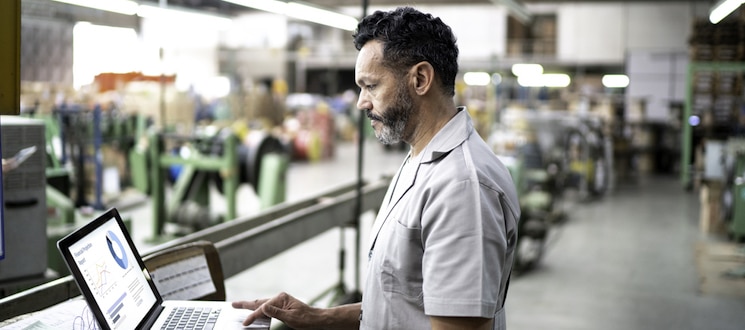
Convergence is everywhere. Computer and phone networks used to be on separate lines (some still are). But increasingly, calls are made over the internet. Similarly, the need for separate cable TV hookups is diminishing as TV shows are increasingly streamed. And in the industrial world, Information Technology (IT) and Operational Technology (OT) systems are coming together in yet another wave now referred to as IT/OT convergence. But the differences between IT and OT are sometimes not well understood.
IT vs. OT
IT refers to systems used to manage complex information by securely manipulating streams of data supporting business processes. Examples include traditional Enterprise Resource Planning (ERP) systems used to manage the accounting general ledger, inventory, or purchasing activity, as a system of record. Other examples include Customer Relationship Management (CRM), Business Intelligence (BI), and other data storage systems. Together, these systems form the essential fabric of how business processes are performed. They are needed to keep a company running by supporting its customers and paying the bills.
OT, on the other hand, relates to those systems running in plants, repair facilities, and across other manufacturing operations that directly relate to how a business operates and builds its products. This set of applications will typically center around a Manufacturing Execution System (MES). Other peripheral components include Industrial Control Systems (e.g. PLCs, SCADA, DCS, and CNC, among others), building management systems, lighting control systems, and energy monitoring, security, and safety systems.
If you are looking to better define an MES, this article will be of interest, What is MES and Do You Need It?
Digital Transformation Brings Convergence
Traditionally, IT and OT operations functioned separately. Summarized data might pass from one to the other. But they didn’t talk much. That is changing as digitalization pervades the enterprise.
An example is wing assembly operations for aircraft. Instead of a technician gathering all the fasteners to then sort, clean, promote, and install the hardware, it is now possible to arm the operator on the factory floor with one interface to execute all tasks.
No longer must the operator ponderously transfer data between systems, rely on paper print outs, or manually try to carry out a great many actions. Inventory consumed as part of a work instruction can automatically transfer this activity back to an ERP system to trigger a future new order once a replenishment trigger has been reached. The advent of digitalization and IT/OT convergence has facilitated a better exchange of data to simplify how these tasks are executed.
The Growing Importance of Digital Continuity
As more systems work together, data can be shared, updated, and reported on with greater consistency while adhering to every systems’ protocols. In other words, the emergence of a “real-time” digital enterprise has occurred. It is now possible to achieve greater operational agility and respond faster to change.
We all are seeing the incredible importance of this capability today, as we watch virtually every industry and company in the world trying to best understand what our new “normal” will ultimately be. And, with this improved flexibility, it should be possible to better navigate a way through today’s current pandemic – and out to the other side to better profitability.
Read more in this article: 3 Ways a Digital Enterprise Can Better Navigate Uncertainty in Today’s Marketplace
The presence of digital continuity between previously disparate systems has given rise to a sophisticated set of processes not previously considered possible. New sensors are now capable of identifying the depth of each hole to be drilled with tools to track what piece of hardware goes where as part of the production process. Manual hole size calculations are eliminated as data flows in real-time between virtual product simulations from an engineering design or Product Lifecycle Management (PLM) system and the ERP, where picklists are generated. This process innovation can cut the time required to a fraction of what was previously required.
IT and OT Unite
What this IT/OT convergence means is that both OT and IT are being transformed to create a digital infrastructure that is greater than the sum of its parts. As a far-reaching, critical component of how manufacturers operate, this synergy is heralding in a new era of manufacturing execution systems operating as an enterprise application. Data collected from these applications are now readily available, can be updated automatically, and can be used to provide data-driven decision support, in real-time.
When IT and OT unite, many benefits occur as a result, including increased efficiency, lower hours per unit produced, higher quality, fewer data input errors, and improved job satisfaction. This transformation is unlocking fantastic opportunities for companies to respond faster to change, better diagnose opportunities for performance improvement, and provide the right data, at the right time, to the right people for intelligent decision support.

